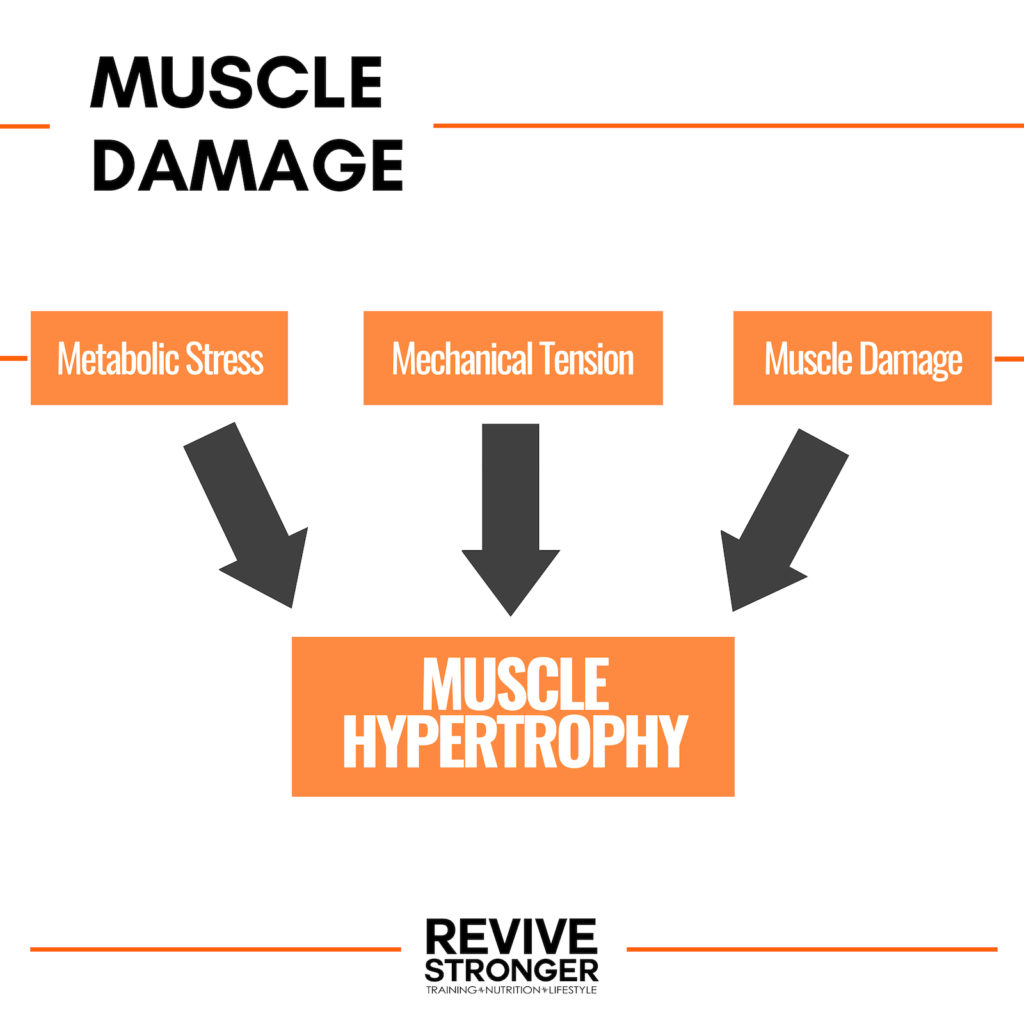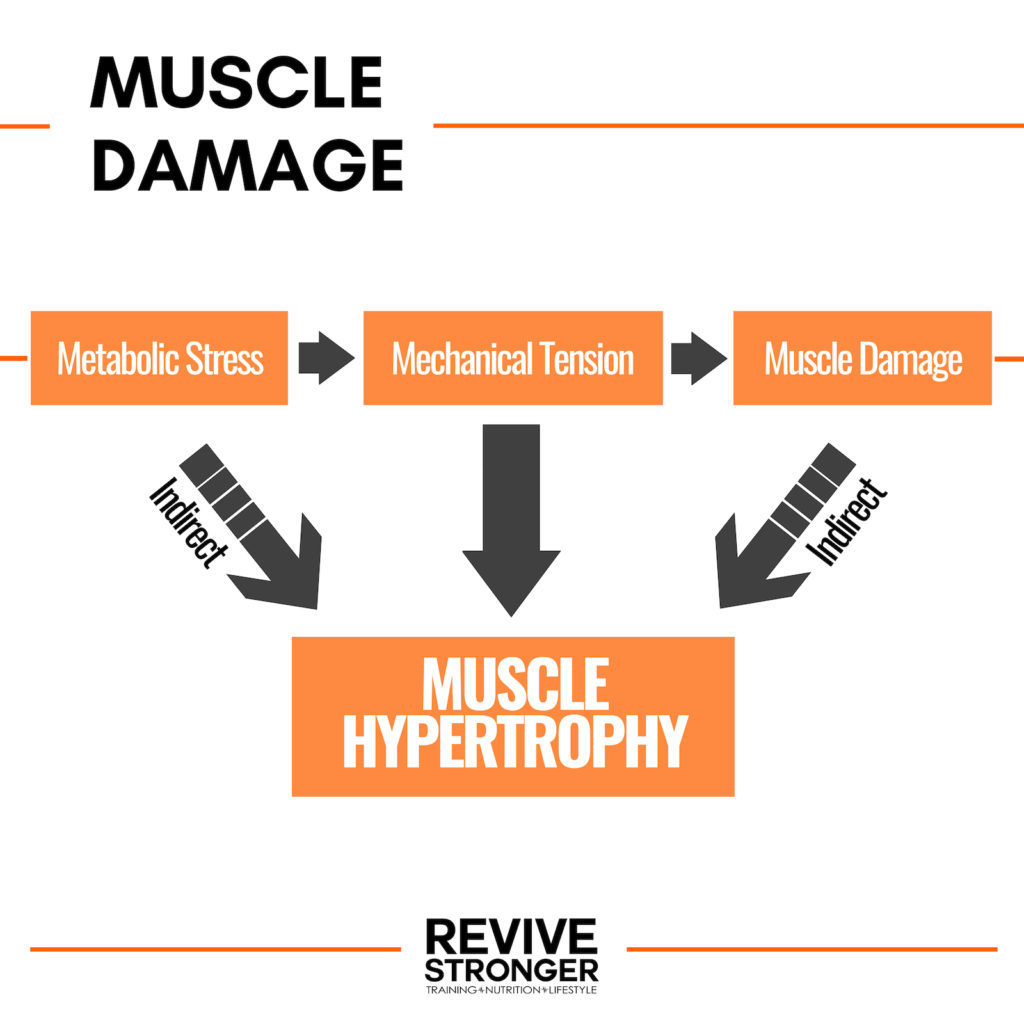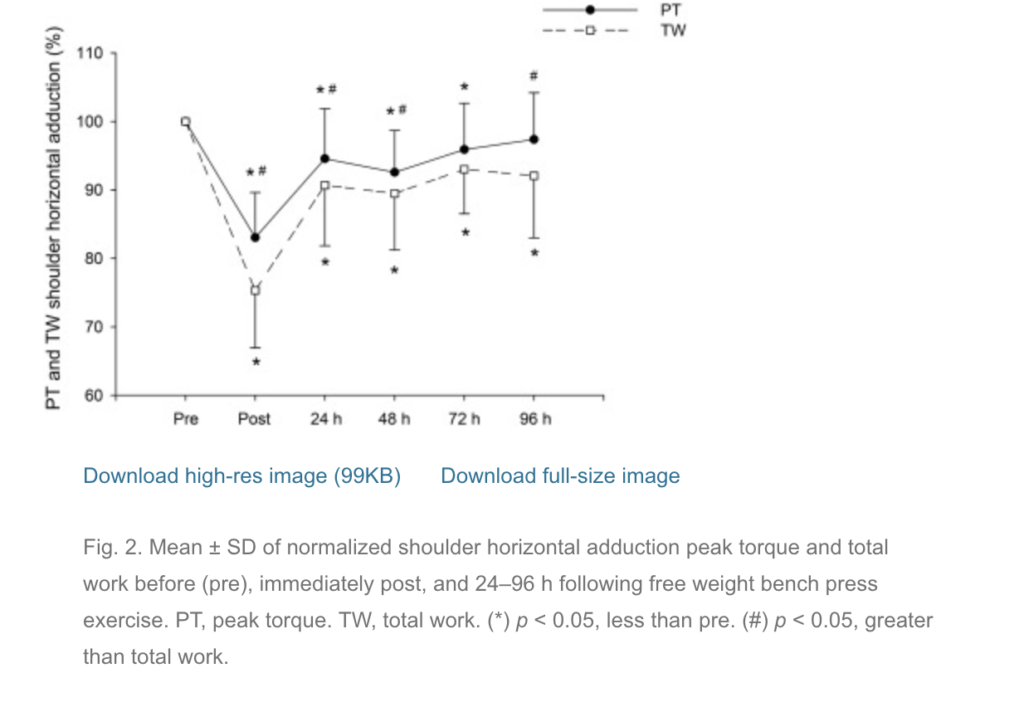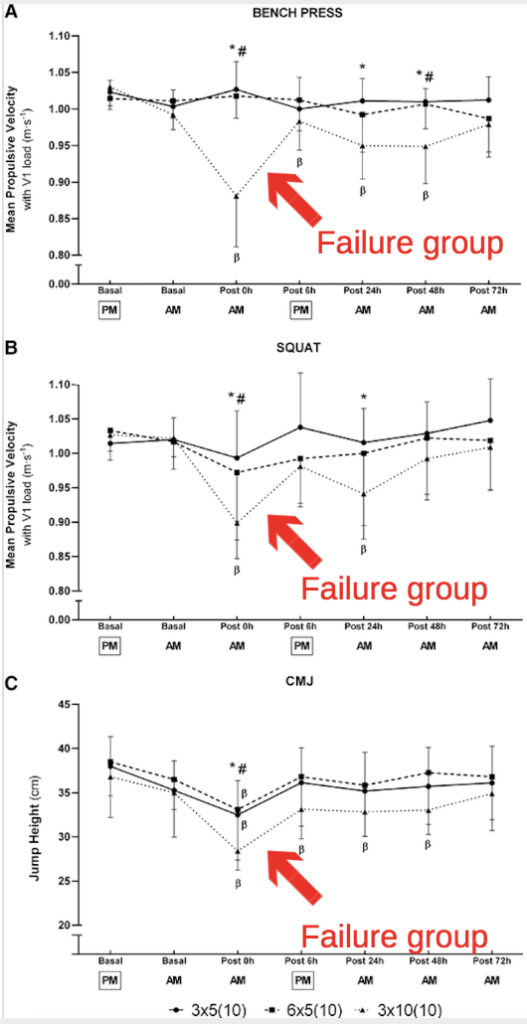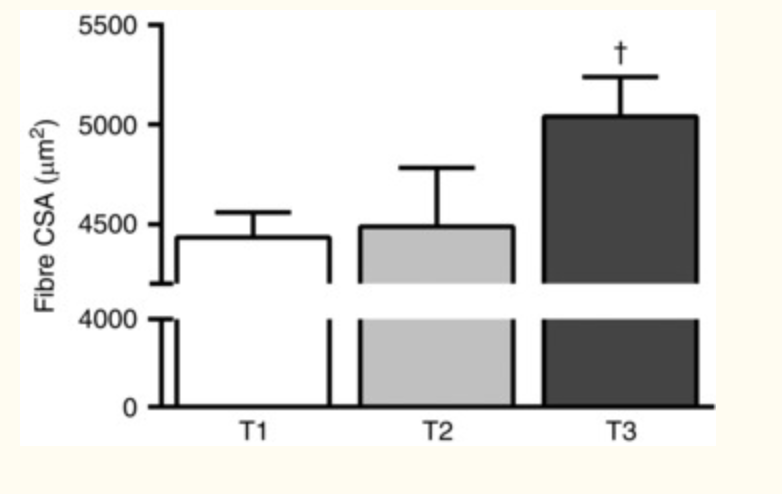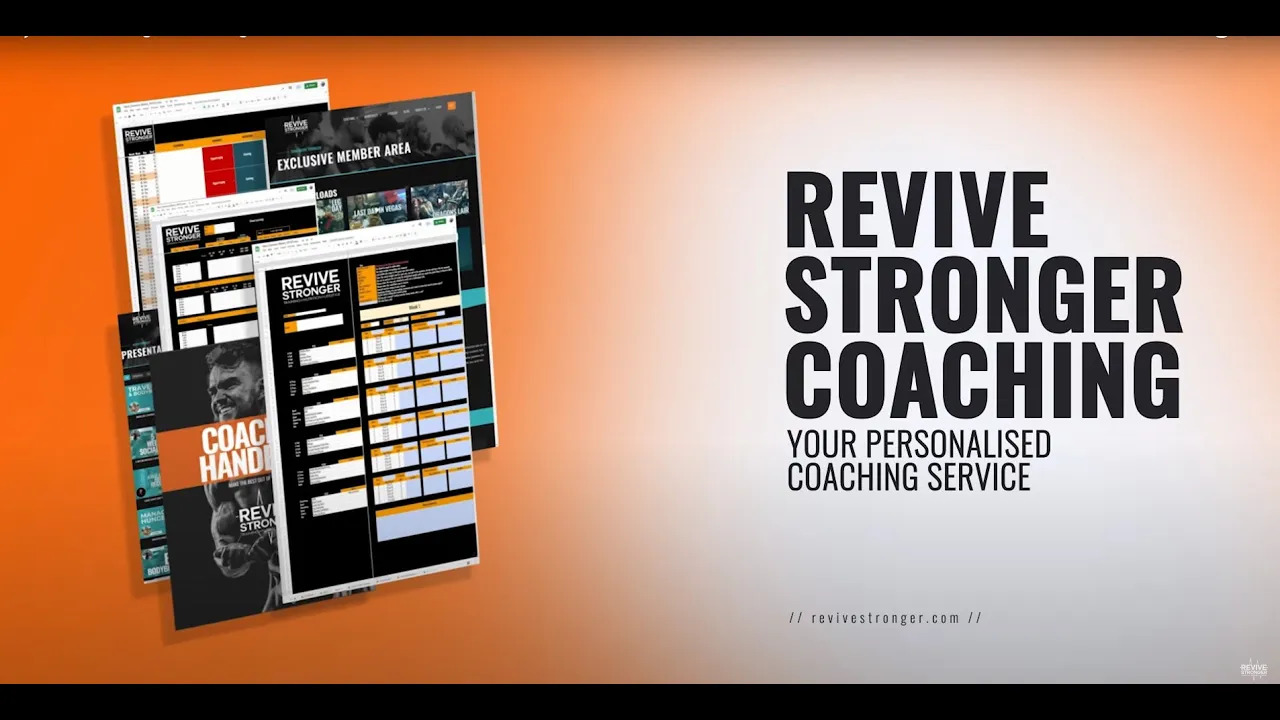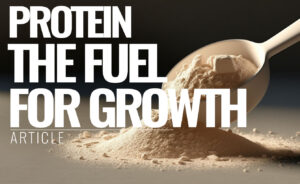
Revive Stronger
Chasing Damage and Soreness: Why It Can Reduce Gains
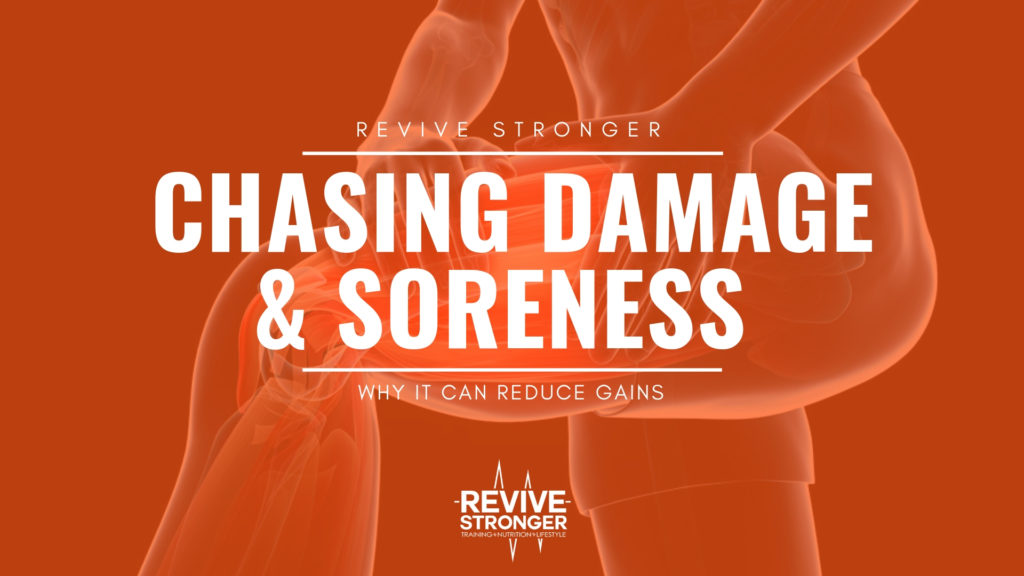
“You see, the way you build muscle is by causing these micro-tears in the muscle and then your body builds your muscles back up, except bigger and stronger”, how many times have you heard this? Or even said it yourself? I’ll be the first to admit it, I believed it and said this myself. It makes sense; a simple, yet rational theory for muscle growth – however, it might not be correct after all.
The process mentioned above is called muscle damage – proposed to be one of the three main drivers of hypertrophy. In 2010, Schoenfeld proposed that muscle hypertrophy is mediated by three factors: mechanical tension, muscle damage and metabolic stress [1].
Image 1. Original accepted model of muscle hypertrophy
Since then, the role of muscle damage and metabolic stress as primary drivers of hypertrophy has been questioned by many; including myself, Menno Henselmans, Carl Juneau and Chris Beardsley. In October of 2018, Wackerhage & Schoenfeld updated the original model of muscle hypertrophy; providing evidence that mechanical tension is the main driver of muscle hypertrophy while metabolic stress and muscle damage may have beneficial properties [2].
Image 2. Updated model of muscle hypertrophy
I will briefly touch on all three; however, the bulk of this article will be about muscle damage and why actively seeking to induce a lot of muscle damage (ie. soreness) within your training protocol is likely not a great idea.
Table of Contents
3 Mechanisms of Hypertrophy
Mechanical Tension
In essence, mechanical tension is the tension that you place on muscle fibres by lifting weights or lifting anything for that matter. You can place a muscle under tension concentrically, like when you are contracting a muscle and moving the weight up. You can also place a muscle under tension through an eccentric contraction, which occurs during the eccentric action of a movement when you’re moving the weight down.
Progressively increasing the amount of total work you do under mechanical tension has strongly been linked to hypertrophy [3]. The continuous increase in total work done through active and passive mechanical tension has been called “progressive volume overload”, which we will refer to as “progressive overload” for the remainder of this article.
Metabolic Stress
Resistance training relies on anaerobic glycolysis and will lead to the accumulation of metabolites that include inorganic phosphate, lactate, phosphocreatine and hydrogen ion as well as hypoxia (low intramuscular oxygen). Metabolic stress is likely what causes the “burn” that you feel during your workout. Metabolic stress has been proposed to lead to growth by mechanisms such as cell-swelling, elevating immune response, increasing fibre recruitment, causing a hormonal response and production of ROS, among other factors. [1,4,5]. It is likely that metabolic stress contributes to growth by fatiguing muscles fibres, leading to a requirement for greater muscle fibre activation to complete the exercise. Although this has not clearly been shown [1]. Metabolic stress is difficult to study since there are thousands of metabolic enzymes, reactions and approximately 4000 metabolites that we know of. As of now, there does seem to be metabolites and metabolic enzymes with anabolic properties, but further research needs to be done.
Muscle Damage
Muscle damage can be classified as the microtears in the myofibril and disturbances in the Z-line. Essentially, it has been proposed that muscle damage directly leads to hypertrophy by cause acutely initiating immune system response, production of myokines, and subsequent activation of growth factors that can regulate satellite cell function [1,2]. However, further research needs to be done, as it is not clear whether muscle damage is necessary for these anabolic processes or if there is an upstream mechanism that will be activated by progressive mechanical tension.
One of the predominant features of muscle damage is soreness known as Delayed Onset Muscle Soreness (DOMS), which typically peaks 24-48 hours after damaging exercise [5]. The degree of soreness experienced is scaled with the amount of damage that is produced.
What causes Muscle Damage?
It is likely that damage cannot be avoided and will happen with progressive tension overload. However, it is particularly exacerbated by a few factors which will be discussed.
Eccentric muscle action induces greater muscle damage than concentric muscle action, likely due to the disruption of actin-myosin bonds that occur during an eccentric action. Further, eccentric muscle action is dominated by fast-twitch fibres, which are more vulnerable to muscle damage compared to slow-twitch fibres [6]. To facilitate your learning – imagine concentric muscle action as the attachment of velcro and the eccentric action as the separation apart of the velcro and the bonds being “torn” from each other. A somewhat similar event happens in the actin-myosin bonds that lead to micro-tears in your muscle fibres.
Further, muscle damage is particularly prominent when performing new exercises, especially if they have a large eccentric component. You may have experienced this if you have ever replaced conventional deadlifts with stiff-legged deadlifts or in the first time you did a slow-eccentric chest fly. After a few sessions, the movement will not cause the same DOMS as it before; this is due to the repeated bout effect. The mechanisms behind this effect aren’t fully understood yet, but it is essentially a protective mechanism against muscle damage that occurs as you perform the movement over time [7].
It is important to consider that eccentric muscle contraction are not exclusive to resistance training; for example, both running and sprinting have large eccentric components when your foot has just hit the ground and must eccentrically brake before propelling you forward. Downhill running or walking is dominated by eccentric muscle action to prevent you from continuously accelerating and eventually falling flat on your face. If you have experience hiking, you likely know how sore you get from the descending portion of the hike.
Why You probably should not Chase Soreness (or Damage)
It’s common for people to question a program because it doesn’t cause the same soreness and pain that they once felt. Due to this, they will move onto a new program or constantly switch exercises in order to avoid the repeated bout effect. Let’s review what muscle damage can affect and what it may do to your progress.
Training Volume
Mechanical tension seems to be the main driver of muscle hypertrophy and progressive volume overload is its vehicle. Above all, a good hypertrophy program needs to prioritize incrementally increasing training volume. It does not have to increase every session, week or even every mesocycle, depending on your training age. However, you should see increases in volume when looking at your annual progress.
One of the most pronounced effects of muscle damage is a temporary significant loss in strength, that can be as large as 50-60% and peak at 24-48 hours. Further, this is also accompanied by a loss of range of motion [5, 8].
In a 2017 study, the effect of training to failure and the subsequent muscle damage on peak torque and total work performed was tested [9]. In this study, 26 subjects performed 8 sets of bench press to failure; the first 4 sets were done with 90% of their 10RM and then the load was dropped by 20% for the subsequent sets. To measure changes in peak force and work capacity the subjects performed 2 sets of 4 of chest flies, followed by 1 set of 20 to failure at 4-time points: after the 8 sets of bench, and then 24-hours, 48-hours, 72-hours and 96-hours post exercise. Muscle damage was indirectly measured using a 100-mm visual analogue scale to describe soreness of the pectoralis major.
Image 2. Peak Torque (PT) and Total work (TW) measured pre and immediately-post exercise, then 24, 48, 72 and 96 hours post-exercise.
The researchers found that peak torque returned to baseline after 96 hours, however, total-work performed did not return to baseline. Similarly, soreness returned to base after 96-hours.
Since progressive overload with proper technique is likely your priority, purposefully seeking muscle damage is probably going to work against you. The factors mentioned above show how muscle damage can hinder your ability to generate higher forces across time, limit total work performed and reduce range of motion. The combination of these factors will lead to a reduction in training volume and likely, a drop-off in exercise technique.
Rating of Perceived Exertion
In 2017 Navarro et al., placed well-trained 10 subjects through 3 training protocols that involved the squat plus bench press [10]. First, they established the subjects 1RM in the SM squat and bench press as well as the load that resulted in the bar moving at 1m/s (V1). Then, they tested 3 different protocols 4 weeks apart: 3×5 @ 75% 1RM, 6×5 @ 75% 1RM and 3×10 @ 75% 1RM (the last protocol was the only that was taken to failure).
The researchers found that when failure was reached in the 3×10 group, there was significantly greater muscle damage as measured by serum creatine kinase, compared to the 3×5 and 6×5 groups. Additionally, the researchers tested the velocity of the same load that initially moved at 1m/s and the subjects 75% 1RM. They found that the velocity of the bar significantly decreased in the group that went to failure for both the V1 and 75% 1RM loads.
Rating of Perceived Exertion (RPE) has a strong inverse relationship with bar speed; meaning that the slower the bar speed, the harder the movement will feel. Specifically, this has been found with the RIR-based RPE scale [11]. Thus, a slower bar-speeds will typically correlate with a closer proximity to failure. If you are inducing a significant amount of damage and a load that you can typically do for 8 reps at an RPE 7, might feel like an RPE 9 at rep 6.
Image 3. Velocity of initial 1m/s load (left) and velocity of 75% of 1RM (right) at baseline,
immediately post bench-bout, after 6, 24, 48 and 72 hours.
The result of this will likely be to either lift lighter loads, so as to maintain RPE or do fewer reps, so as to maintain the load. In the end, both will cause you to sacrifice training volume.
Hypertrophic Response
In 2016, Damas et al., measured myofibrillar protein synthesis (MyoPS) and muscle damage in 10 subjects, who performed 10 weeks of resistance training. The researchers took muscle biopsies of the vastus lateralis after the first workout (T1), at 3-weeks (T2) and at 10-weeks (T3), using the biopsies to measure MyoPS, muscle damage and muscle Cross-Sectional Area (CSA). The resistance training protocol involved 3 sets of 9-12 reps taken to failure of leg press and leg extension.
Interestingly, the researchers found that both protein synthesis and muscle damage peaked at T1 and went down across time. However, this was not correlated with the greatest gains in muscle size. In fact, muscle CSA did not significantly increase at the 1-week or 3-week mark. Significant gains in muscle CSA were only seen at T3, the 10-week mark.
Image 4. Muscle CSA measured at after initial workout (T1), at week 3 (T2) and at week 10 (T3)
Now, your question might be: why did muscle size only increase in week 10 if protein synthesis peaked in week 1?
Recall that muscle damage also peaked at week 1 and significantly decreased at week 3 and then again at week 10. While MyoPS decreased from the initial measurement, it remained significantly elevated above baseline. Thus, it is likely that the exercise was sufficiently damaging to blunt the hypertrophic outcomes of the elevated protein synthesis. Once muscle damage decreased, then significant increases in CSA could be made.
This does not mean that muscle-damage will inherently hinder muscle hypertrophy; as there is research that suggests that it may promote hypertrophy through increased satellite cell activation and myokine production [1, 2, 5, 13]. Although further research needs to be done to find if muscle-damage is required for this process or if there an upstream pathway, perhaps regulated by mechanical tension
However, this does mean that there is likely an upper-limit to how much damage you can induce without it directly interfering with your ability to gain muscle.
Practical Applications
Practically, you cannot completely avoid muscle damage – and there is not sufficient evidence to think that completely avoiding it would be a good idea to begin with. Progressive mechanical tension is going to lead to muscle damage; during the concentric muscle action as you lift more weight, but mostly during the eccentric muscle action when you lower more weight.
You are also going to induce muscle damage when you swap out exercises, either because you get bored or because you need to hit the muscles from a slightly different angle.
Further, you will cause damage when you hit failure; whether it’s on purpose or not, you will likely take a few sets to failure every now and again.
The question is not how do we avoid muscle damage. The question is, how can we minimize damage, to a reasonable extent, in order to lead to the maximal hypertrophic and performance outcomes?
Exercise Selection
Avoid switching exercises frequently, unless an injury forces you to do so. As stated above, the repeated bout effect is your body’s protective mechanism against muscle damage. When you initially introduce an exercise, you will likely experience soreness as well as the decrease in strength and range of motion. Further, increases in muscle size may be directly inhibited by a large amount of damage induced by the exercise. By refraining from changing exercises frequently, you will minimize the time that you spend adapting to the damage of an exercise and maximize the time that you spend getting a significant growth stimulus from that exercise.
I recommend keeping compound, multi-joint movements, such as squat or deadlift variation, unchanged for at least 2-3 mesocycle (8-12 weeks). Isolation, single-joint movements such as bicep curls, triceps pushdowns, leg extension or others, can be changed every mesocycle (4 weeks).
Training to Failure
Training to failure is going to lead to significant damage, soreness and will likely interfere with your ability to return baseline performance and work capacity. Training to failure is not necessary to make gains, in fact leaving a few reps in the tank can lead to the same gains in muscle and strength compared to training to failure [14].
I recommend training within 1-4 reps shy of failure; as this will allow you to train with sufficient intensity of effort to get near-maximal fibre recruitment without significantly hindering your ability to accumulate volume across time
Cardio Modality
High-impact, eccentric-dominant modalities of cardio can induce significant muscle damage and this may interfere with your ability to progress in the gym. For this reason, it is likely a good idea to limit the amount of high-intensity high-impact cardio that you are doing such as various forms of sprint training, especially if it involves change-of-direction.
If you want to utilize this style of cardio, I recommend that you do it at the end of your training week, after you have finished your weekly lower body sessions. If you don’t care for this type of cardio, then you can utilize cardio modalities such as the elliptical, incline walking or stationary bike among others
Conclusion
You cannot avoid muscle damage and you probably shouldn’t – however, you also should probably not actively chase it. Many will stop feeling DOMS and think that this means their body has adapted to the program, rendering it useless. That’s where you’re wrong kiddo. Yes, this means that your body is adapted to the program however that makes the program and exercise more useful rather than useless.
As the repeated bout effect takes place, you will be able to recover quickly without seeing large drop-offs in strength and technique due to damage and the subsequent soreness. This effect will allow you to use more weight while maintaining technique. As a result, you will likely consistently improve performance and accumulate more volume across time since you will be able to use more weight. Further, muscle damage will decrease and allow myofibrillar protein synthesis to effectively increase muscle cross-section area.
In short, don’t go chasing waterfalls – or muscle damage!
Author
MIGUEL BLACUTT
Miguel is an athlete, academic and coach with a burning passion for science and fitness. He is studying Nutritional Biochemistry at McGill University, Canada, and has the goal of obtaining a Ph.D. in Exercise Science. Miguel’s purpose for obtaining an extensive education is to become the best coach possible and to contribute to the academic field by performing research on strength and physique athletes.
References
1: Schoenfeld, B. (2010). The mechanisms of muscle hypertrophy and their application to resistance training. Journal of Strength and Conditioning Research, 24(10), 2857-72. doi:10.1519/JSC.0b013e3181e840f3
2: Wackerhage, H., Schoenfeld, B., Hamilton, D., Lehti, M., & Hulmi, J. (2018). Stimuli and sensors that initiate skeletal muscle hypertrophy following resistance exercise. Journal of Applied Physiology (bethesda, Md. : 1985), 2018 Oct 18. doi:10.1152/japplphysiol.00685.2018
3: Goldberg, A., Etlinger, J., Goldspink, D., & Jablecki, C. (1975). Mechanism of work-induced hypertrophy of skeletal muscle. Medicine and Science in Sports, 7(3), 185-98.
4: De Freitas, M. C., Gerosa-Neto, J., Zanchi, N. E., Lira, F. S., & Rossi, F. E. (2017). Role of metabolic stress for enhancing muscle adaptations: Practical applications. World Journal of Methodology, 7(2), 46–54. http://doi.org/10.5662/wjm.v7.i2.46
5: Clarkson, P., & Hubal, M. (2002). Exercise-induced muscle damage in humans. American Journal of Physical Medicine & Rehabilitation, 81(11 Suppl), 69.
6: Schoenfeld, B. (2012). Does exercise-induced muscle damage play a role in skeletal muscle hypertrophy? Journal of Strength and Conditioning Research, 26(5), 1441-53. doi:10.1519/JSC.0b013e31824f207e
7: McHugh, M. (2003). Recent advances in the understanding of the repeated bout effect: The protective effect against muscle damage from a single bout of eccentric exercise. Scandinavian Journal of Medicine & Science in Sports, 13(2), 88-97. doi:10.1034/j.1600-0838.2003.02477.x
8: Clarkson, P., & Newham, D. (1995). Associations between muscle soreness, damage, and fatigue. Advances in Experimental Medicine and Biology, 384, 457-69.
9: Ferreira, D., Gentil, P., Ferreira-Junior, J., Soares, S., Brown, L., & Bottaro, M. (2017). Dissociated time course between peak torque and total work recovery following bench press training in resistance trained men. Physiology & Behavior, 179, 143-147. doi:10.1016/j.physbeh.2017.06.001
10: Morán-Navarro, R., Pérez, C., Mora-Rodríguez, R., De, L., González-Badillo, J., Sánchez-Medina, L., & Pallarés, J. (2017). Time course of recovery following resistance training leading or not to failure. European Journal of Applied Physiology, 117(12), 2387-2399. doi:10.1007/s00421-017-3725-7
11: Helms, E., Storey, A., Cross, M., Brown, S., Lenetsky, S., Ramsay, H., Dillen, C., Zourdos, M. (2016). RPE and velocity relationships for the back squat, bench press, and deadlift in powerlifters. Journal of Strength and Conditioning Research, 1, 1-1. doi:10.1519/JSC.0000000000001517
12: Damas, F., Phillips, S., Libardi, C., Vechin, F., Lixandrão, M., Jannig, P., . . . Ugrinowitsch, C. (2016). Resistance training-induced changes in integrated myofibrillar protein synthesis are related to hypertrophy only after attenuation of muscle damage. The Journal of Physiology, 594(18), 5209-22. doi:10.1113/JP272472
13: Crameri, R., Aagaard, P., Qvortrup, K., Langberg, H., Olesen, J., & Kjær, M. (2007). Myofibre damage in human skeletal muscle: Effects of electrical stimulation versus voluntary contraction. The Journal of Physiology, 583(1), 365-380. doi:10.1113/jphysiol.2007.128827
14: Nóbrega, S., Ugrinowitsch, C., Pintanel, L., Barcelos, C., & Libardi, C. (2018). Effect of resistance training to muscle failure vs. volitional interruption at high- and low-intensities on muscle mass and strength. Journal of Strength and Conditioning Research, 32(1), 162-169. doi:10.1519/JSC.0000000000001787
What Next?
Join our free facebook group or add us on Instagram (revivestronger) and ask your question there, I will respond asap. Or if you’re after a fresh training programme we have a free 4 week plan using DUP that you can download for free here.
One more thing…
Do you have a friend who would love the above?
Share this article with them and let me know what they think.
[bctt tweet=”Chasing Damage and Soreness: Why It Can Reduce Gains” username=”revivestronger”]
We are a personal coaching service that helps you achieve your goals. We want you to become the best version of yourself.


